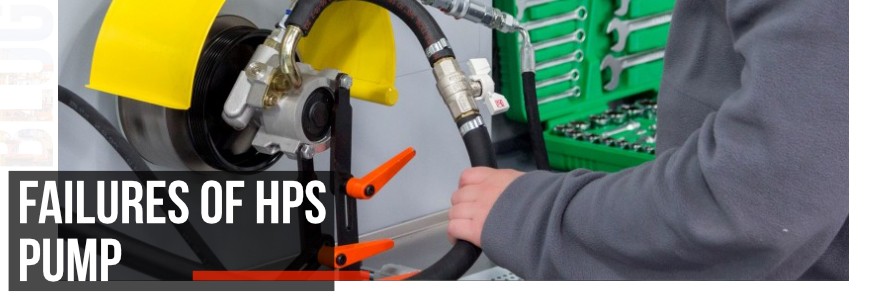
Although electric power steering systems are very popular and widely used today, hydraulic power steering systems are still in demand and hold the automotive market share.
A pump is one of the main parts of the hydraulic steering system, it ensures the oil circulation and maintains the pressure level.
There are different types of HPS pumps: rotary vane pumps and gear pumps. Rotary vane pumps are the most common ones. These units are highly efficient and resistant to wear. However, the gear pumps are simple and low-wearing compared to the rotary ones.
Specific signs of rotary pump deterioration and its impending failure are as follows:
- Increase of steering effort soon after the car pulls out. The same applies when the ambient temperature is high.
- The vibration of a steering wheel when being turned.
- The pump makes noises either when a steering wheel is in its extreme position or it’s an intermittent noise.
- Foaming and/or darkening of the power fluid in the pump hydraulic reservoir.
- Burning smell abnormal for the fluid.
- Oil leakage marks under the engine at the parking spot.
- Squealing of the pump drive belt.
Normal operation conditions and observance of the pump service regulations ensure its long life and smooth functioning.
- Don’t use contaminated or old oil. Change the oil in the system systematically, every 45-60 thousand kilometers or every two years depending on your driving behavior and environmental conditions,
- All seals and other rubber products degrade with time. If the car is old, regular inspection of the system for leaks is absolutely necessary. Visual evaluation of the level of oil in the tank is the quickest way of leak detection. If it dropped, it means there is a leak.
- Don’t buy the cheapest oil.
- Don’t use any other additives or “repair” fluids.
- Check the tension and condition of the drive belt.
- Break the habit of putting a steering wheel in its extreme position when idling before making a turn or U-turn.
Unfortunately, with time all the car mechanisms and units wear out and fail. Visual assessment of the technical condition of the majority of car units is not possible. Only special equipment-provided readings will allow us to understand the necessity of the unit repair or replacement. For example, Test Bench MS604 helps to diagnose single- or double circuit power actuated HPS pumps. Tester MS611 is used for evaluation of the technical condition of HPS units directly in a car.



COMMENTS